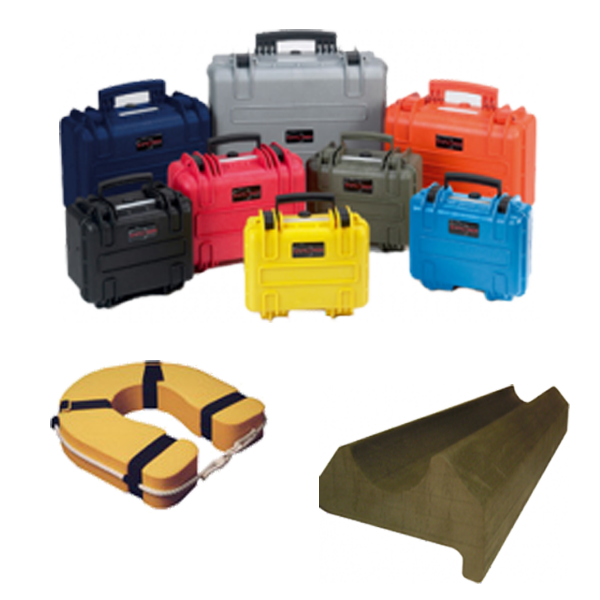Closed cell polyethylene foams from Polyformes are superb for marine buoyancy applications. With Plastazote LD15 foam being the lightest foam available at 15kg/m3, it is particularly suitable for use as formers in hull stiffening ribs and stringers of large fibre reinforced plastic (FRP) boats. EF220 Ethafoam (35kg/m3) will often be used in these applications too as it is a large board size in its virgin form. This makes it easy to cut into longer sections for stringers or positive buoyancy blocks.
Man Overboard stretchers and cradles can utilise the expanded polyethylene foam. Many a life has been saved by these SOLAS approved items. The buoyancy of the foam ensures complete flotation support.
Horseshoe lifebuoys and foam vests can be made without additional coverings keeping costs down and buoyancy high. The Evazote and Plastazote foams used for these purposes are highly water and uv resistant thus lasting for many years under standard usage. EF220 Ethafoam is often used in fabric covered life-vests as a low cost easily shaped option.
Professional buoyancy aids manufactured using foam achieve the 50-100 Newtons of buoyancy required to conform to the International CE standard EN393. Some premium jackets offer fixed foam buoyancy of 100N and are officially classed as lifejackets as they turn you into the upright position once in the water.
Foam buoyancy aids have great advantages over inflatables as they will not puncture, and unlike polystyrene, will not break or come apart. When participating in active water-sports such as water-skiing or jet-skiing, the foam retains its shape, cushioning and buoyancy properties whatever impact there might be.

Many RIBS (rigid inflatable boats) are replacing the pneumatic tube systems, which are susceptible to puncturing and deflation, with foam fenders and sections. Being closed cell, flexible and resilient, they cannot puncture, the maintenance is minimal, no air checks are required and they are very cost effective.
Buoys-cylindrical, anchor pendant, navigation and marker, will usually have a closed cell foam floatation core rather than a urethane foam core as this ensures the buoy will not absorb water even if the outer skin is punctured. The pe foam make the buoys self-fendering with a high impact absorption capacity. It is usual for the buoys and fenders to have a closed cell polyethylene foam core and an outer skin of reinforced polyurethane elastomer. This proves very economical as even after many years in service, the foam core can be re-skinned. Flat fenders in semi-rigid pe foam are ideal as dual-use fenders and cushions. As these can be made in any size or shape, they will fit any vessel area.
Tubular hose floats for dredging, oil terminals and environmental areas can be made in standard or bespoke sizes, as can safety booms and bridge protectors. Curtain booms, for both short and long term deployment in harbours, rivers, ponds, dams, oil terminals, utilise the pe foam. Many foam filled standard or curtain booms are made in section lengths that can be joined to suit the specific requirement at the time.
The diving industry and scuba fraternity are big users of our waterproof Explorer Cases for carrying and using all forms of equipment including oxygen cylinders, full dive outfits, nautical and navigational instrumentation as well as medical equipment. You can protect your diving gear and essentials not just during transit but also in situ. These watertight and submergible cases will ensure your kit remains dry and safe whether in the water, on a boat or on the road.